Gum Disease Treatment – Sunnyvale, TX
Put Bleeding Gums Behind You!

Gum disease can set in slowly, but once it really gets going, it can cause some serious oral health problems. Bad breath, swollen gums, tooth aches and even tooth loss are all in your future if you let gingivitis become something serious.
If you’re one of the 50% of the adults in the U.S. that has some form of gum disease and you live near Sunnyvale, TX, Dr. George Philip and his team can use gum disease treatment to help you put bleeding gums behind you! Give us a call today and we’ll let you know what this could look like for you.
Why Choose Dr. George Philip for Gum Disease Treatment?
- Office Outfitted with the Latest Dental Technology
- Experienced, Dedicated Dentist Committed to Your Needs
- Comfortable Operatories That Make Treatment a Pleasure
What is Gum Disease?

Gum disease, also known as periodontal disease, is an accumulation of bacteria in the mouth that flourishes along the gums. It comes in two stages—gingivitis and periodontitis. Gingivitis is the milder version of the condition, and its symptoms are mostly confined to bad breath and bleeding gums.
However, this can easily turn into periodontitis, which is more severe. Bone loss and tooth loss become possible. These problems are irreversible if they begin, which means that it’s crucially important that you catch and treat gum disease before it progresses to this point.
Symptoms of Gum Disease
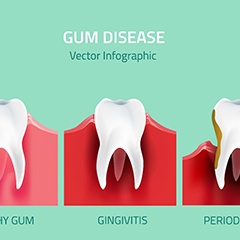
To understand the distinction between these two conditions, it may be helpful to explain in a bit more detail what symptoms each of them entail.
In the case of gingivitis:
- Gums that bleed during brushing or flossing
- Gums appearing dark red in color
- Swelling or redness of the gums
- Persistent bad breath, known as halitosis
- Gums that are tender to touch
- Receding gums, where the gum tissue pulls back, revealing more of the teeth structure
And for periodontitis:
- Discomfort or pain during chewing
- Sensitivity in teeth due to gum recession
- Alteration in the way your teeth fit together when you bite
- Changes in the fit of dental restorations, such as partial dentures
- Loosening of permanent teeth
- Loss of teeth
How Do We Treat Gum Disease?
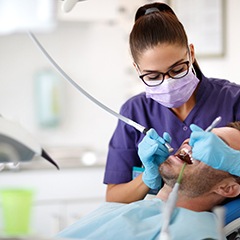
Gum disease is a complex condition with a variety of treatment options connected to it. We will thoroughly examine your smile before deciding on what procedure to use—here are a few that we may choose from.
Scaling & Root Planing
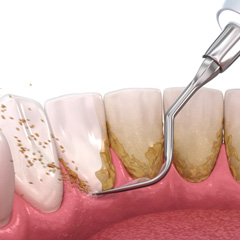
A standard dental cleaning isn’t always enough to get rid of the bacteria that’s contributing to gum disease. Depending on how severe the issue is, our team may recommend a deep cleaning to address the source of your gum infection. A deep cleaning consists of two main steps: scaling and root planing. When performed together, these steps can go a long way toward stopping gum disease from growing worse.
Do You Need Scaling & Root Planing?
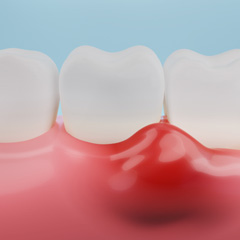
The earliest stages of gum disease can sometimes be reversed with good oral hygiene, but once it progresses to a certain point, scaling and root planing may become necessary. If you notice any warning signs of gum disease (such as bleeding gums, gum recession, or shifting teeth), you should schedule an appointment with our team immediately. We’ll examine your mouth carefully in order to determine the best treatment option in your case.
The Process of Scaling & Root Planing
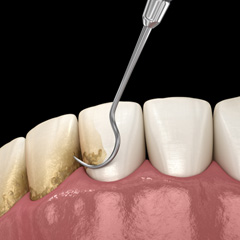
You can typically expect the scaling and root planing process to take at least two appointments to complete. Scaling is the first step; it involves getting rid of any plaque and tartar that have built up on your teeth, thus reducing the presence of the bacteria that are causing your gum disease. We’ll particularly make sure to clean down to the bottom of any pockets that have formed between your teeth and gums.
Once scaling is complete, we’ll move on to root planing. This is where we gently smooth out the tooth roots that are normally covered by your gum tissues. Doing so will encourage the gums to reattach to the teeth. On top of that, it can reduce the risk of future plaque accumulation by creating a surface that bacteria can’t accumulate on as easily.
Aftercare Tips for Scaling & Root Planing

To help make sure your recovery goes as smoothly as possible after scaling and root planing, be sure to follow these simple steps:
- Plan on not eating for at least a couple of hours following the procedure. Your mouth will still be numb due to the local anesthetic; trying to eat in this state could cause you to bite your tongue or cheek by accident.
- Make a point of rinsing with salt water every few hours. This will help reduce any discomfort that you may be experiencing.
- If necessary, you can take an over-the-counter pain reliever.
- Until your mouth has finished recovering, you should make a point of staying away from foods that are sharp, spicy, or especially hot.
- Continue to brush your teeth as you normally would. Be very gentle when cleaning near the area where scaling and root planing were performed.
Normally, your discomfort should fade on its own over time, and your gums should finish healing within a week or two.
Antibiotic Treatment

Most antibiotics aren’t sufficient in order to completely eliminate bacteria, but combined with other treatments they can be incredibly useful. These antibiotics can come in the form of a prescription mouthwash, a pill, or small microspheres placed in the gum pockets.
Laser Periodontal Treatment
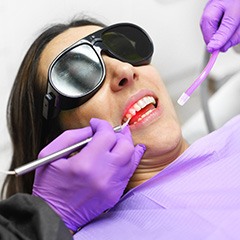
Dental lasers have quickly earned a reputation for excellence in oral health procedures, especially when treating problems like gum disease. Laser periodontal treatment at our Sunnyvale, TX office can quickly and precisely remove damaged gum tissue, reducing the risk of reinfection while eliminating the need for a scalpel and sutures. Not only is laser treatment more accurate than traditional gum surgery, but most patients also find it much more comfortable and easier to recover from than traditional methods.
How Laser Periodontal Treatment Works
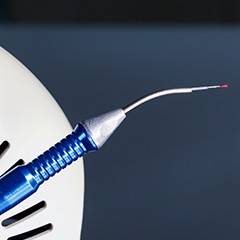
Laser periodontal treatment uses a special laser known as the NV Touch soft tissue laser which emits a concentrated beam of light energy to remove infected gum tissue and bacteria from the pockets around your teeth. The laser is so precise that it can target only the diseased and inflamed tissue, leaving your healthy gum tissue intact. This translates to a more comfortable treatment with less bleeding and a faster recovery than traditional gum surgery.
The laser works by absorbing pigmented bacteria and inflamed tissues, vaporizing them on contact. This eliminates the diseased gum tissue and sterilizes the area, reducing the levels of bacteria that are colonizing in your gums while encouraging the healing process.
The laser can also be used to remove tartar buildup beneath the gum line and help your gums healthily reattach to your teeth.
The laser periodontal treatment begins with your dentist numbing the affected areas of your mouth with a local anesthetic. Once your mouth is completely comfortable, we will use the laser to remove the infected tissue and oral bacteria from the pockets surrounding your teeth. As the tissue is eliminated, the laser also sterilizes the area and cauterizes it so there is less bleeding.
The Benefits of Laser Periodontal Treatment
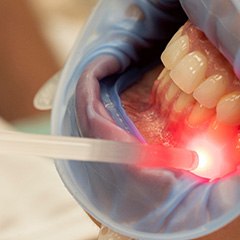
Laser periodontal treatment eliminates the need for a scalpel and sutures, which is much more comfortable and faster to recover from. Additionally, because it sterilizes the area as it works, it also reduces the risk of the treated area becoming reinfected following the procedure. This means that you’ll have a much briefer, and more comfortable recovery.
Aftercare Tips for Laser Periodontal Treatment

Following your laser periodontal treatment, your gums will need time to heal and regenerate. You may experience some mild discomfort, which can typically be managed with the help of over-the-counter pain relievers like ibuprofen or acetaminophen. In the days following your procedure, please also adhere to the following:
- Eat a soft diet.
- Avoid any foods that are hot, spicy, hard, sticky, or very crunchy.
- Be sure to brush your teeth twice a day.
- Floss between each tooth daily.
- Rinse your mouth daily with antimicrobial mouthwash.
Remember that the best way to prevent reinfection is to maintain excellent oral hygiene and attend your regularly scheduled exam and cleaning appointments with Dr. Philip.
Chao Pinhole Technique
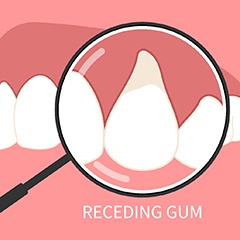
This technique is used to help stretch gums that have receded. It’s done by creating tiny holes in the gum line and massaging them gently using a specialized instrument, allowing them to more effectively cover the roots of the teeth without the need for sutures, incisions, or a gum graft.

